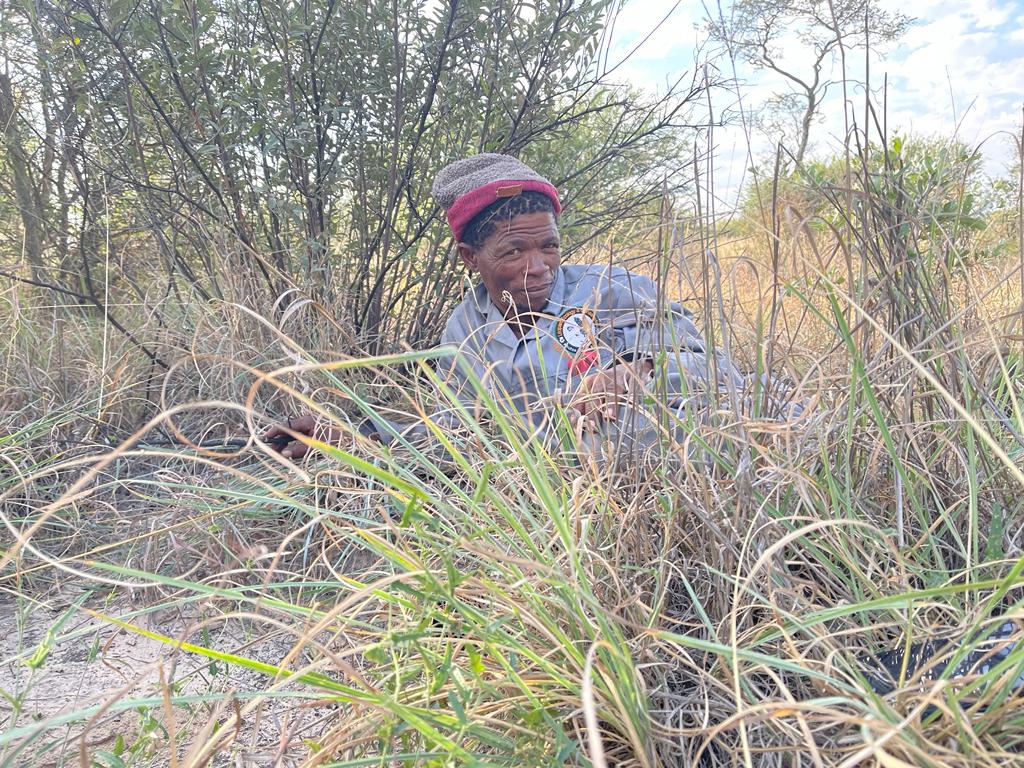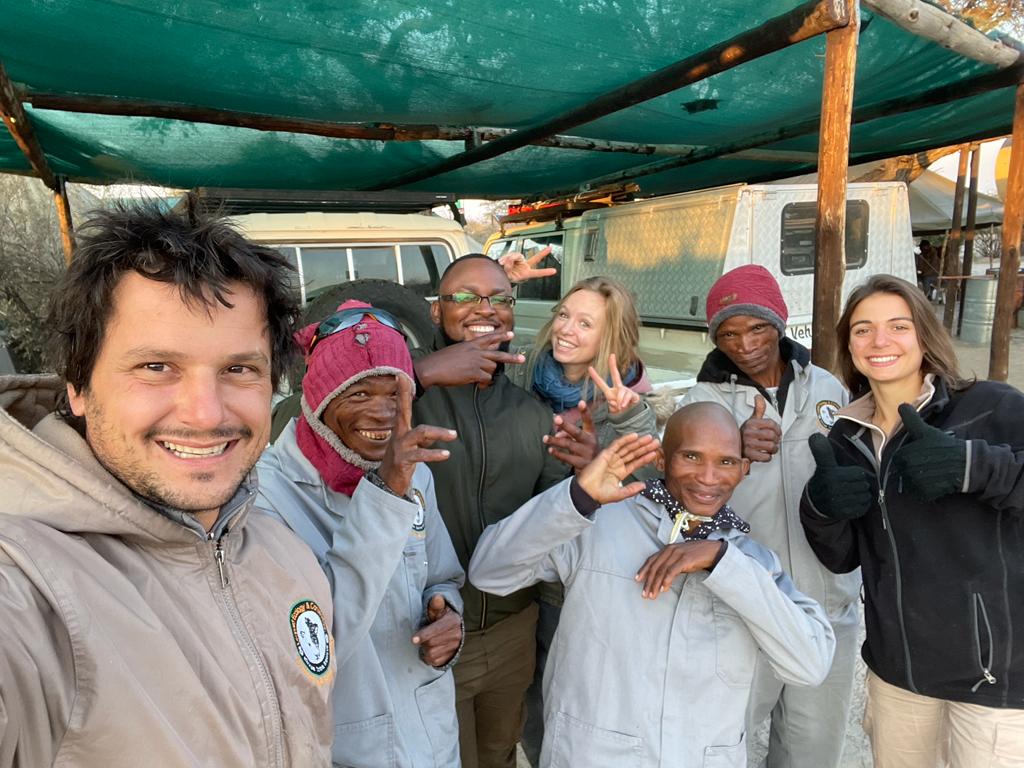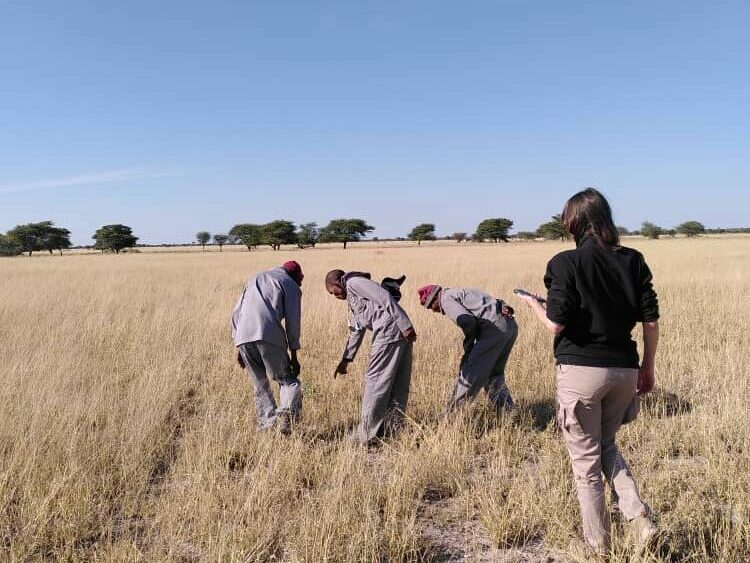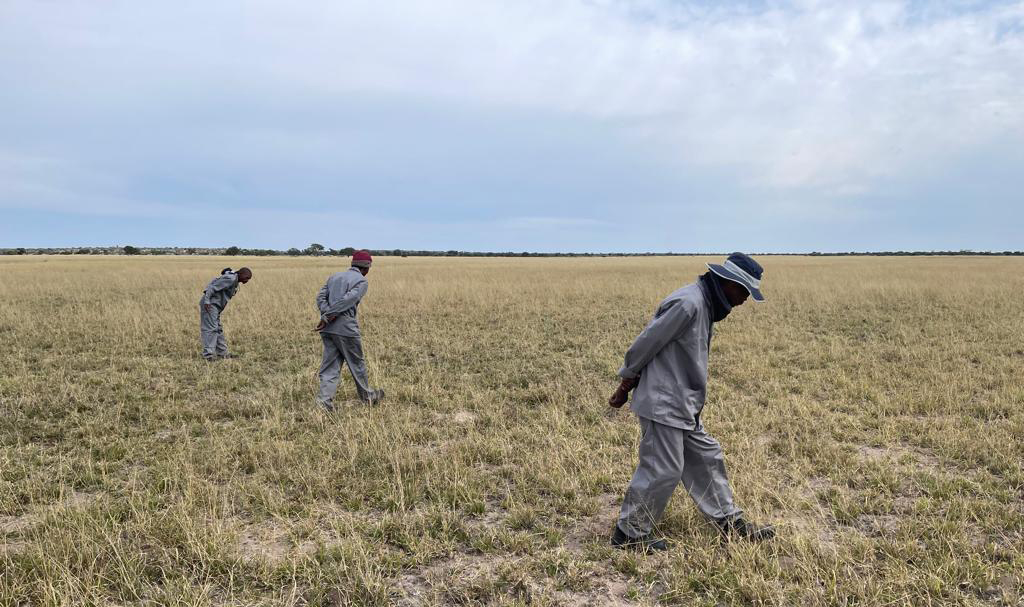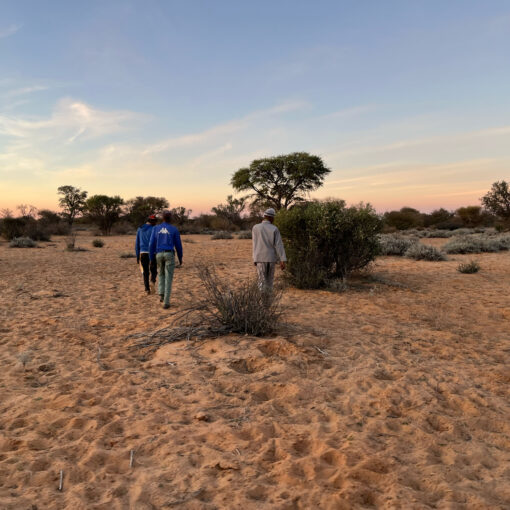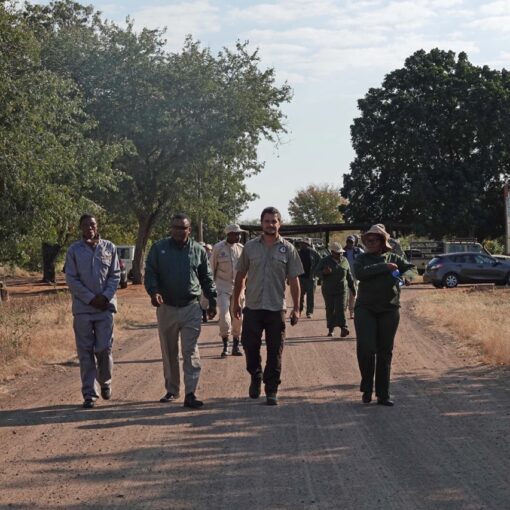During the last three months (15th May – 15th August 2023), the Research Department of LEC has collaborated with the Quantitative Conservation Biology Research Group (QUAC, led by Prof. Nicolas Schtickzelle) of Catholic University of Louvain (UCLouvain, Belgium) on an exciting new project! For a few years now, both parties have been collecting wildlife tracks along transects in the Kalahari region, in order to convert them into population densities to inform conservation programs. A key parameter to allow this conversion is the average number of kilometers the species of interest travel in one day, or “daily travel distance”. Empirical data of daily travel distance are still lacking for some Kalahari large herbivore species (i.e. Eland, Red hartebeest, Kudu, Ostrich and Springbok), which are also important prey for lions and leopards. Here is where our collaboration began, LEC and UCLouvain being both determined to obtain this missing information.
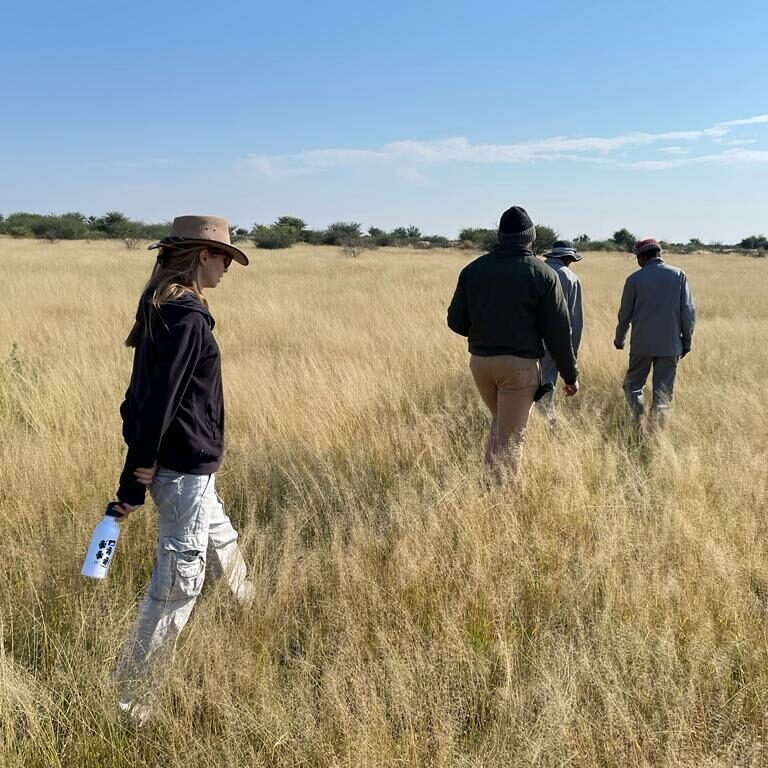
Supervised on site by Ms. Marie-Charlotte Gielen (PhD student, UCLouvain) and Mr. Alessandro Araldi (Field Research Coordinator, LEC), the field team was composed of Ms. Marie Jardeaux (MSc student, UCLouvain), Mr. Seitshiro Pule (Intern, LEC), and three excellent local trackers by the names of Mr. Duela Seganaphofu, Mr. Xee Fire Seganaphohu, and Mr. Senxwai Mosololo. They all ventured out deep in the bush of Khutse Game Reserve and southern Central Kalahari Game Reserve to unravel the whereabouts of these five herbivore species! Every day, for 3 consecutive months, they trailed individual animals or groups on foot such as they could record the actual distance they travelled in 24h. After the initial few trailing’s, the trackers had big smiles at the end of the days. When they were asked why, they told us that it was like going back to their youth, when they used to track herbivores to learn and become good subsistence hunters. This project has indeed been very close to a simulated traditional hunt with the challenge of finding the “prey” at a precise time and without being seen.
All species combined, the team collected more than sixty 24-hours trails, walking up to 20 km per day in the middle of the wilderness! Regular camping trips in the reserve at around 5°C at night, witnessing a live hunt of a young kudu by a cheetah, with a few close encounters with lions, elephants, and even a black mamba: a real adventure! Thanks to the impressive ecological knowledge of the trackers, the team also acquired a new understanding of what animals are actually up to in their everyday life, by interpreting animal behavior from their tracks. Congratulations to all team members for this remarkable achievement! After a well-deserved rest, data analysis will soon start to yield final results by the end of the year. To be continued …
Our gratitude goes to the Department of Wildlife and National Parks and the Ministry of Environment, Natural Resources Conservation and Tourism of Botswana for permissions to conduct this research. Marie-Charlotte Gielen and Nicolas Schtickzelle thank the Fonds de la Recherche Scientifique – FNRS (Belgium), which supported this research. LEC and UCLouvain also thank Dr. Derek Keeping for his valuable advice on the data collection protocol. Their gratitude also goes to the Kalahari tracker community for partnering with them, sharing their knowledge and making the field work possible. Finally, a great thanks to all the team members of this project, LEC for logistic support and its staff for their assistance and welcoming the team at camp. (Text by Marie-Charlotte Gielen, PhD Student, UC Louvain)
